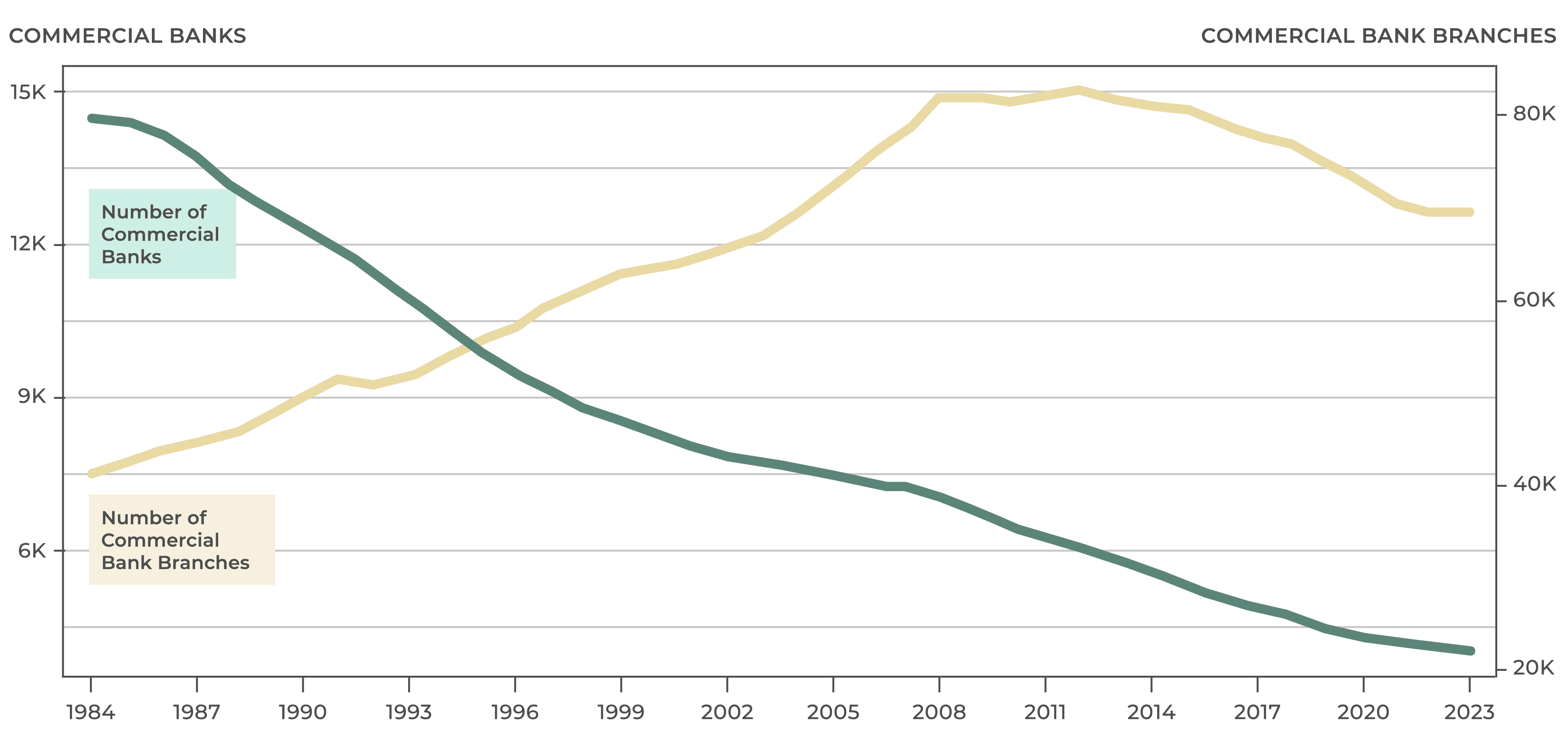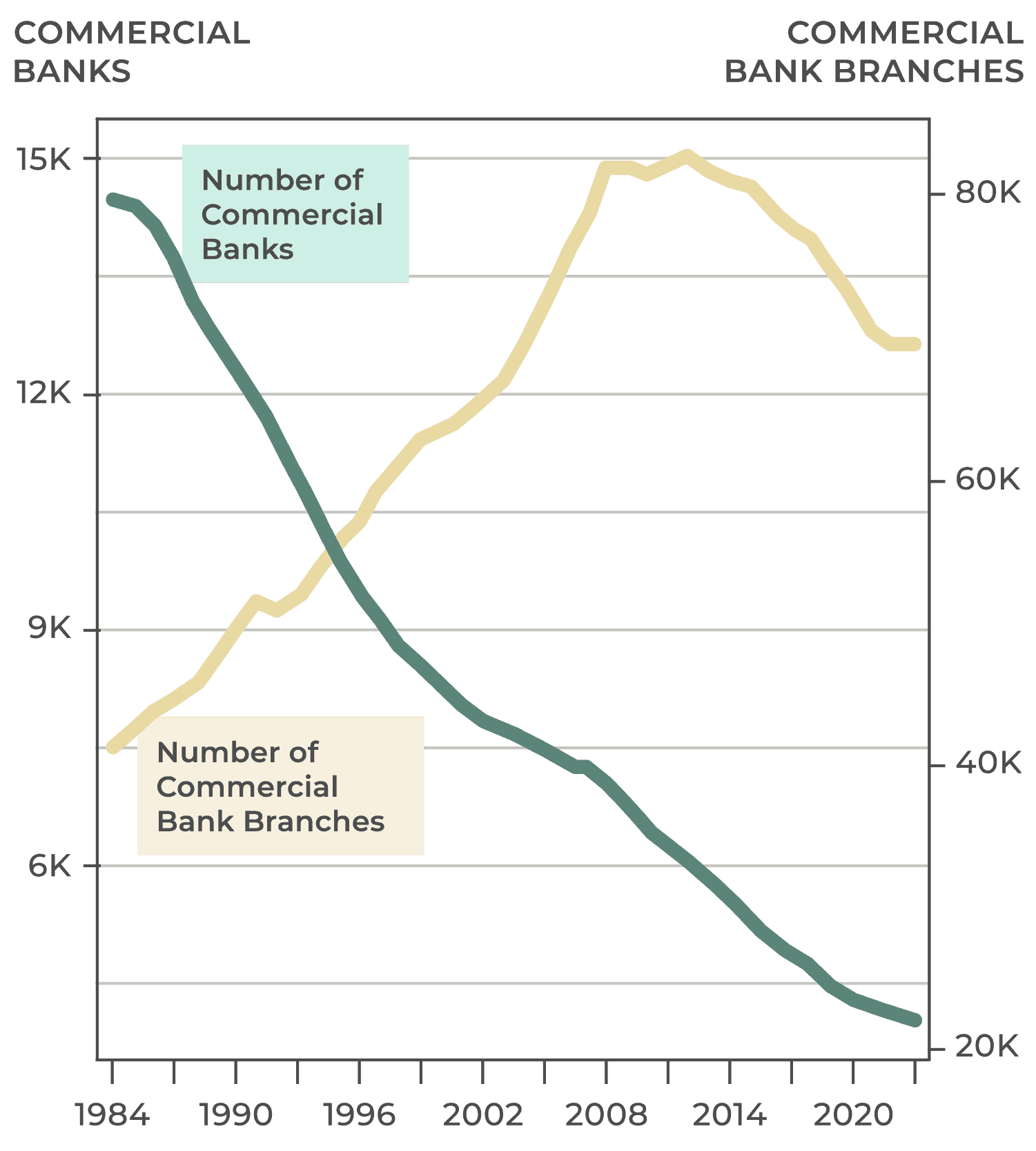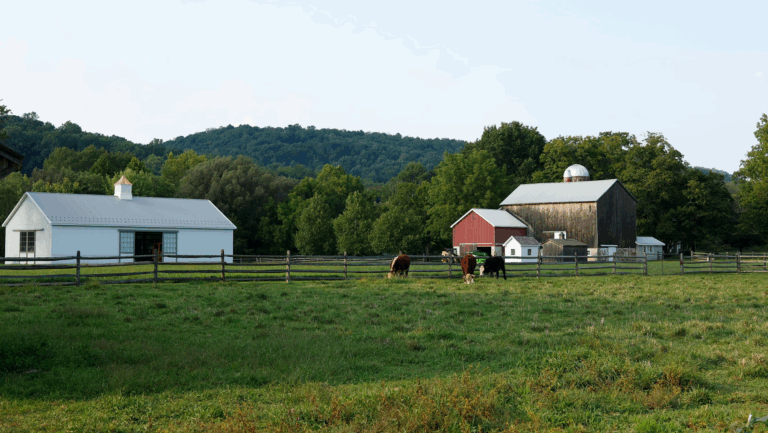Consolidation in the U.S. Ag Finance Sector
For ag finance to truly serve farmers, there must be freedom through optionality.
The topic of consolidation in U.S. agriculture is a hot one, but it’s primarily discussed at the farm and processing level. Both are critical topics, as monopolies in the meatpacking industry or the disappearing American family farm have significant impacts on the present and future of our food system. Less scrutiny is placed, however, on another sector that is an essential part of keeping our farms in motion—the U.S. ag finance sector.
Historical Trends and Impact of Consolidation in Ag Finance
Consolidation in the U.S. ag finance sector—the merging of financial institutions that offer farm loans—has been progressing for decades, with significant acceleration beginning in the 1980s and 1990s. One reason for this is the Riegle-Neal Interstate Banking and Branching Efficiency Act of 1994, which allowed banks to expand across state lines, leading to a wave of mergers and acquisitions. While it increased reach for ag financial institutions, it also reduced the number of local and regional banks in Rural America as many that offered agricultural lending options were absorbed by larger financial institutions.
Other factors that contributed to the consolidation in ag lending in the years that followed include,
- Ongoing urbanization of the U.S. population,
- Increased cost of commercial banking after the post-Great Recession passage of the Dodd-Frank Wall Street Reform and Consumer Protection Act; and
- The proliferation of digital banking.
As a result, the availability of personalized, relationship-based farm loans has significantly decreased, limiting options for rural borrowers and reshaping the lending landscape.


Source: Federal Deposit Insurance Corporation
Over the last several decades, these mergers have had significant implications for loan accessibility and flexibility for American farmers and ranchers. In a nutshell, the consolidation of ag finance reduces competition and options for farmers. Farmer-focused financing requires flexible and customizable options along with specialized knowledge to create the perfect fit. The acquisition of small rural banks means there are now fewer lenders who understand the specific needs of these essential farm and ranch operations, potentially leading to higher loan costs and less favorable terms that do not set operators up for lasting success.
Supporting the Future of American Agriculture with Farmer-Focused Financing Options
AgAmerica was founded by those who experienced the pitfalls of a consolidated ag finance sector firsthand and who understood the overarching consequences if alternative options weren’t created. Ag financing options that put the farmer first and understand the industry’s unique needs are crucial for maintaining the resilience of family farms in the face of global market pressures. Farmers need diverse loan products to stay competitive, adapt to changing market conditions, and invest in their operations.
Designed by farmers and financial experts alike, AgAmerica’s farmer-friendly loan programs were created to do just that. We believe in supporting American farmers with adaptable financing options capable of evolving alongside them. Whether it’s securing a loan for land expansion, restructuring current debt into more favorable terms, increasing liquidity operational improvements, or all the above, we’re here to help you get the job done.
Explore AgAmerica’s spectrum of loan offerings today to find the right financial solutions for your unique operation.






